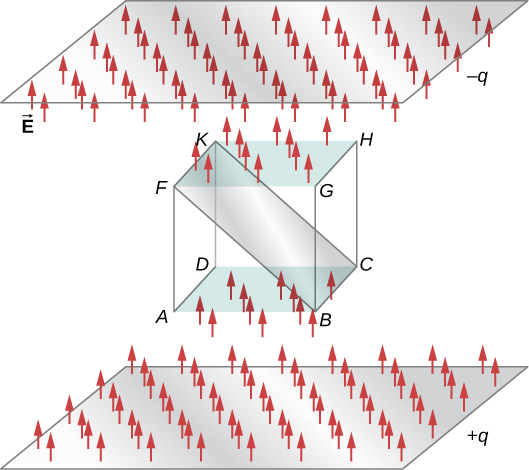Gauss’ Law: Understanding Flux and Charge
What the Flux?!?
Flux is an essential concept in physics, helping to describe how much of something passes through a given area. In the context of electric fields, flux quantifies how many electric field lines pass through a specified surface. This concept also applies to magnetic fields, making it a versatile tool in physics.

Defining Electric Flux
Imagine a charged object with a specific surface area. The electric flux across this surface is determined by the number of electric field lines passing through the area. Mathematically, the flux is expressed as:
Where:
: Electric flux.
: Electric field.
: Area vector (magnitude equals the surface area, direction perpendicular to the surface).
: Angle between and .
Positive and Negative Flux
Positive Flux: When field lines exit a closed surface.
Negative Flux: When field lines enter a closed surface.
In a closed surface with no enclosed charge, the total flux is zero. For example, consider a closed surface with 11 field lines entering and 11 field lines exiting. The positive and negative fluxes cancel, yielding a net flux of zero.
Gauss’ Law: Relating Flux to Enclosed Charge
Gauss’ Law provides a direct relationship between the electric flux through a closed surface and the charge enclosed within that surface. It is mathematically expressed as:
Where:
: Total electric flux through a closed surface.
: Total charge enclosed by the surface.
: Permittivity of free space (≈).
Breaking Down Gauss’ Law
The left-hand side represents the total electric flux across a closed surface.
The right-hand side equates this flux to the enclosed charge, divided by the permittivity of free space.
Gauss’ Law is particularly useful for symmetric charge distributions, such as spherical, cylindrical, or planar symmetry.
Applying Gauss’ Law: Examples
Example 1: Flux Through a Sphere
For a point charge enclosed by a spherical surface:
Electric field strength is constant over the surface.
Surface area of the sphere is.
Using Gauss’ Law:
Rearranging:
This shows how the electric field decreases with the square of the distance from the charge.
Example 2: Charge Distribution
If a charge distribution has density ρ, the enclosed charge can be calculated as:
For uniform charge distributions, the calculation simplifies proportionally to the volume enclosed.
Gaussian Surfaces
When solving problems involving Gauss’ Law, choosing an appropriate Gaussian surface is crucial:
Sphere: For point charges or spherical charge distributions.
Cylinder: For linear charge distributions.
Plane: For infinite sheets of charge.
Key Tip: The surface should exploit symmetry, making calculations easier. Ensure the Gaussian surface encloses the charge described in the problem.
Common Mistake:
Many students incorrectly define a 2D shape (like a circle) as a Gaussian surface. Always choose a 3D shape (e.g., sphere, cylinder, or pillbox).
Charge Density in Gauss’ Law
In complex scenarios, charge density (ρ) may vary with position, requiring integration to find the enclosed charge. For instance:
If ρ depends on radius, use the volume element .
Example:
For a sphere with charge density ρ = :
Practice Problems
Problem 1: Zero Flux
Question: A cube contains no charge. What is the net electric flux through its surface?
Answer: The net flux is zero because there is no enclosed charge.
Problem 2: Charge in Nested Cylinders
Question: An inner cylinder encloses and shows 4 field lines exiting. The outer cylinder has 8 lines entering. What is the net charge on the outer cylinder?
Answer:
Inner cylinder: .
Outer cylinder: Net flux indicates .
Therefore, the outer cylinder must have a charge of .
Problem 3: Spherical Surface Inside a Sphere
Question: A Gaussian surface lies inside a uniformly charged sphere. How does the enclosed charge vary with radius?
Answer: The charge enclosed is proportional to the volume of the Gaussian sphere:
Real-World Applications
1. Faraday Cages
Gauss’ Law explains why the electric field inside a conductor is zero. This principle underlies the function of Faraday cages, which shield sensitive electronics from external fields.
2. Planetary Atmospheres
Charge distribution in planetary atmospheres often relies on principles of Gauss’ Law to model electric field variations with altitude.







